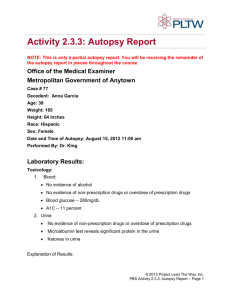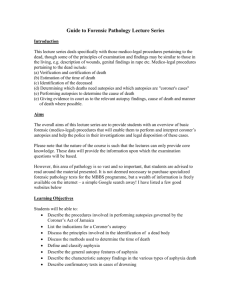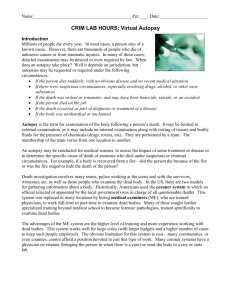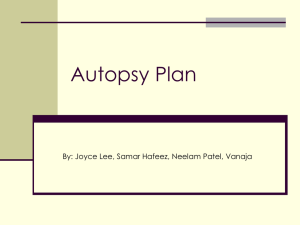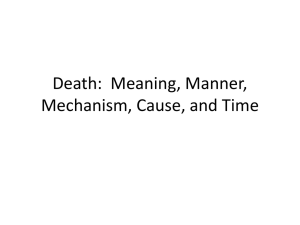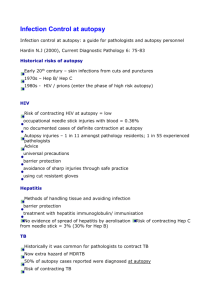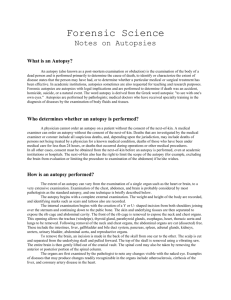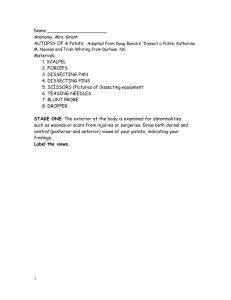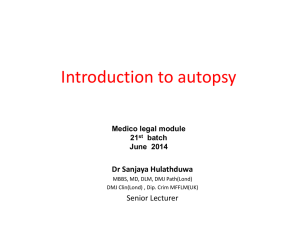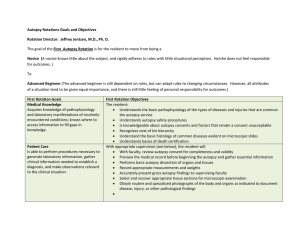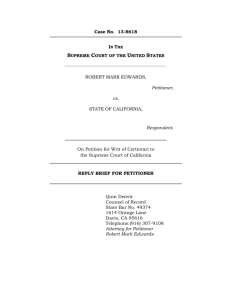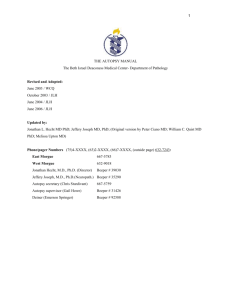Social Interaction Intervention
advertisement
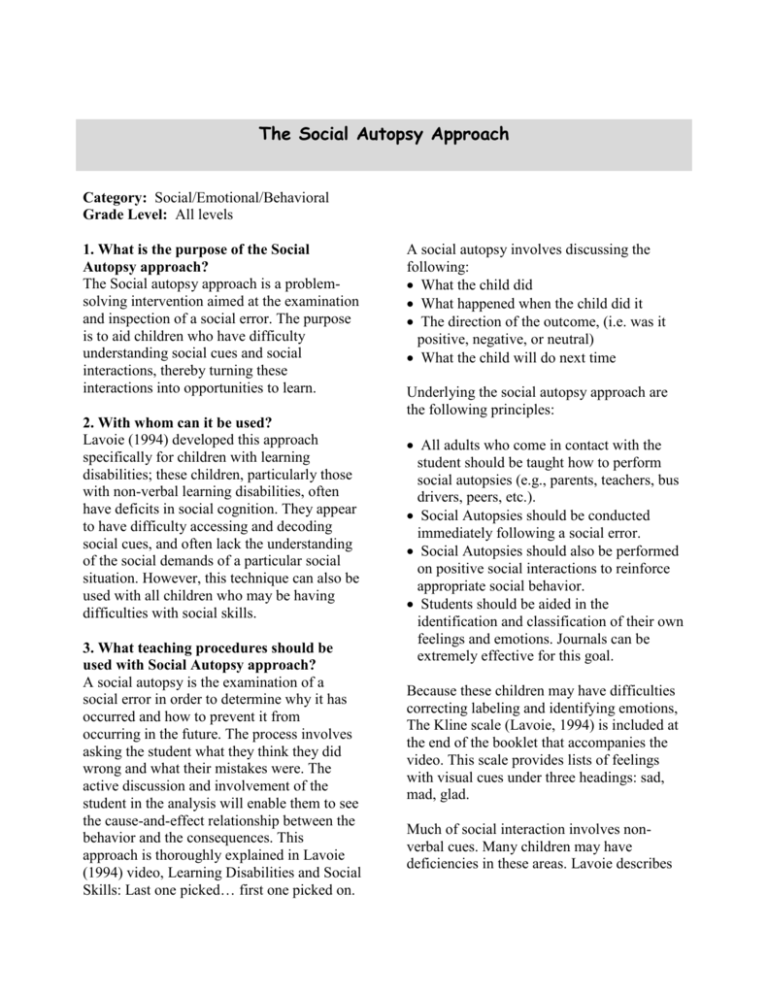
The Social Autopsy Approach Category: Social/Emotional/Behavioral Grade Level: All levels 1. What is the purpose of the Social Autopsy approach? The Social autopsy approach is a problemsolving intervention aimed at the examination and inspection of a social error. The purpose is to aid children who have difficulty understanding social cues and social interactions, thereby turning these interactions into opportunities to learn. 2. With whom can it be used? Lavoie (1994) developed this approach specifically for children with learning disabilities; these children, particularly those with non-verbal learning disabilities, often have deficits in social cognition. They appear to have difficulty accessing and decoding social cues, and often lack the understanding of the social demands of a particular social situation. However, this technique can also be used with all children who may be having difficulties with social skills. 3. What teaching procedures should be used with Social Autopsy approach? A social autopsy is the examination of a social error in order to determine why it has occurred and how to prevent it from occurring in the future. The process involves asking the student what they think they did wrong and what their mistakes were. The active discussion and involvement of the student in the analysis will enable them to see the cause-and-effect relationship between the behavior and the consequences. This approach is thoroughly explained in Lavoie (1994) video, Learning Disabilities and Social Skills: Last one picked… first one picked on. A social autopsy involves discussing the following: What the child did What happened when the child did it The direction of the outcome, (i.e. was it positive, negative, or neutral) What the child will do next time Underlying the social autopsy approach are the following principles: All adults who come in contact with the student should be taught how to perform social autopsies (e.g., parents, teachers, bus drivers, peers, etc.). Social Autopsies should be conducted immediately following a social error. Social Autopsies should also be performed on positive social interactions to reinforce appropriate social behavior. Students should be aided in the identification and classification of their own feelings and emotions. Journals can be extremely effective for this goal. Because these children may have difficulties correcting labeling and identifying emotions, The Kline scale (Lavoie, 1994) is included at the end of the booklet that accompanies the video. This scale provides lists of feelings with visual cues under three headings: sad, mad, glad. Much of social interaction involves nonverbal cues. Many children may have deficiencies in these areas. Lavoie describes three main areas that the Social Autopsy approach can target: Kinesics: reading body language and facial expressions. This also involves the inappropriate use of physical gestures. Proxemics: understanding of appropriate use of physical space, including standing too close to others. Vocalics: understanding the social nuances of voice volume, tone, and speed and what each communicates to others. 4. In what type of settings should Social Autopsy approach be used? The Social Autopsy approach should be used with children who have difficulties with social skills, in all setting at all times, because all interactions between people are social interactions. There is no limited to where this approach can be used. Social Autopsies are generally conducted one-on-one. 5. To what extent has research shown the Social Autopsy approach to be useful? There has been no research on the Social Autopsy approach per se. However, research investigating social skills interventions clearly demonstrate that necessary components of successful approaches involve teaching in context, as close as possible to real-life situations, with multiple significant people to promote generalization. The Social Autopsy approach achieves these goals. This approach is widely used and easily adaptable to fit individual children’s needs. References 1. Lavoie, R. (1994). [Video] Learning disabilities and social skills with Richard Lavoie: Last one picked… first one picked on. Washington, DC: WETA. (Distributed by PBS Video). Stokes, B. F. & Baer, D. M. An implicit technology of generalization. Journal of Applied Behavior Analysis, 10, 349-367. Reviewed by: Anna Simpson


